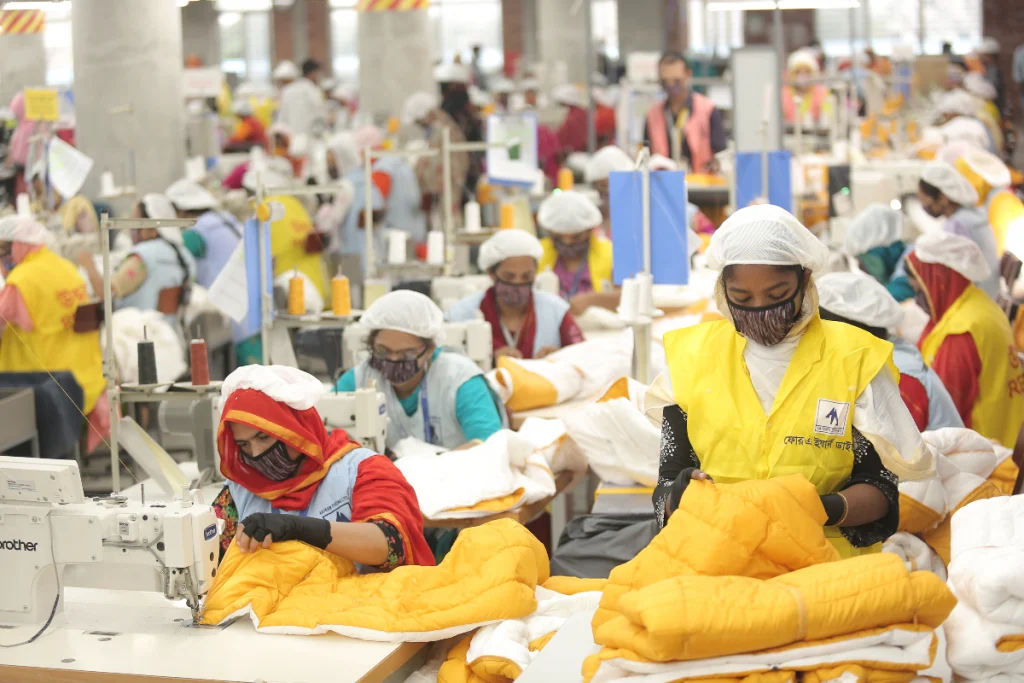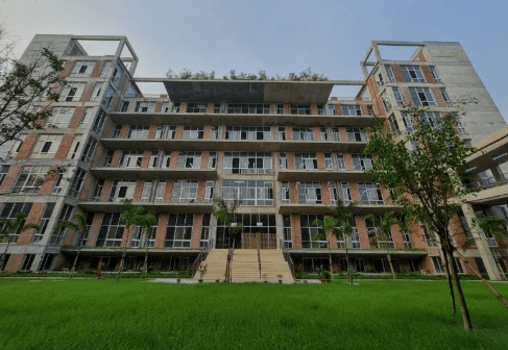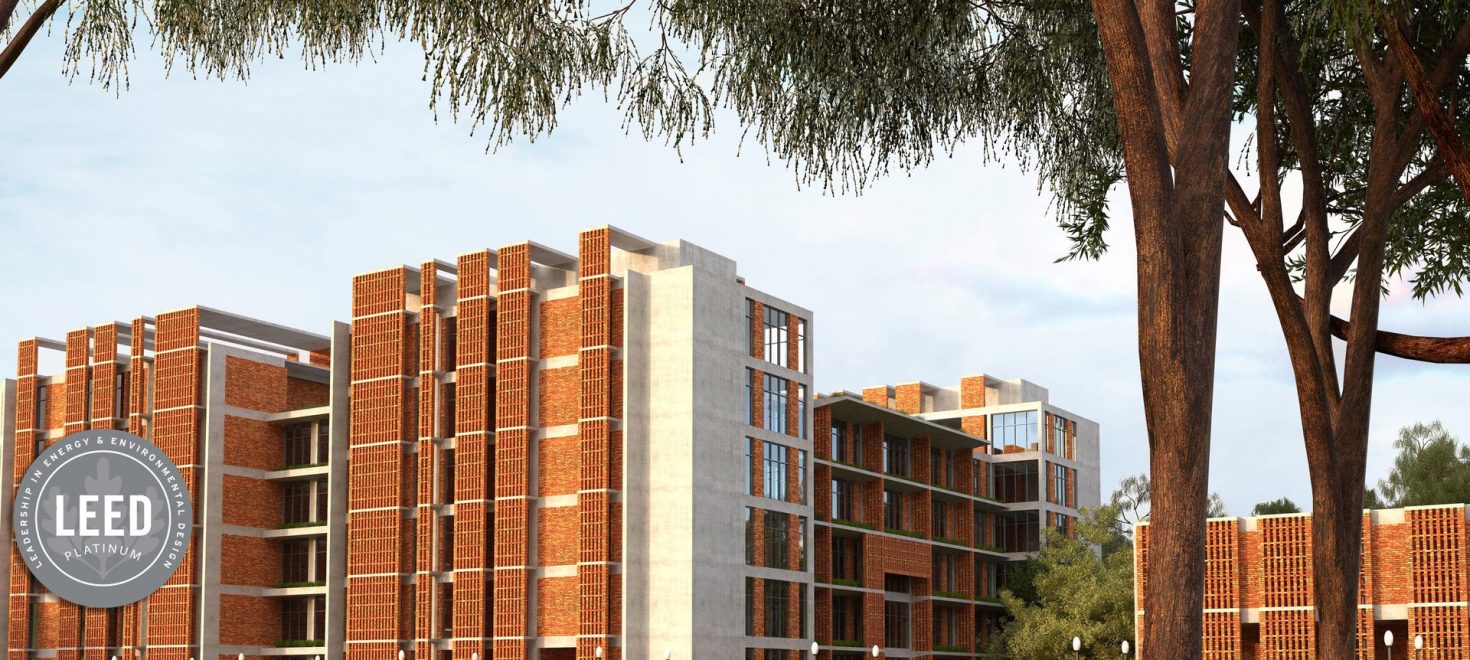
I recently had the chance to visit a clothing factory in Bangladesh. This factory is noteworthy because it’s certified as a LEED Platinum green building. Being LEED Platinum-certified means it’s super environmentally friendly. You see, the fashion industry is one of the big reasons our air, water, and environment get polluted. That’s where green buildings like this one come in handy.
With fast fashion being a big part of the problem, having green buildings can help reduce its bad effects on the environment. Having a sustainable clothing factory is a big deal. It saves money in the long run, makes the brand look good, follows rules better, keeps workers happy, and helps the environment. It’s worth investing in.
Observations of note within a sustainable factory
Green buildings have layouts that are good for the environment. The factory’s design focuses on being good for the environment, using green energy sources and smart layouts.
The LEED-certified factory uses green energy to power machines and equipment. It gets all its energy from renewable sources, which really helps cut down on its carbon footprint.
To make the air better and keep things cool, the factory has planted plants between the floors where things are made.
Even though it’s all about being green, the factory still manages to make things quickly. This shows that being good for the environment and being productive can work together.
This factory is a great example of how to be innovative and good for the environment in the industry.
I wanted to talk about what I saw at the LEED-certified garment factory. I also want to talk about some other things I learned, like why it’s good to have green buildings, the problems with making them, and the good things that happen in the long run with sustainable factories.
Benefits of Green Buildings
In a time when the world is grappling with severe heat waves and environmental challenges, green buildings offer several crucial benefits:
Mitigating Climate Change
Reducing energy consumption is the primary goal of green buildings. The manufacturing sector consumes a lot of resources and energy to run machinery in various textile and garment manufacturing processes. By reducing energy consumption and emissions, green buildings help combat global warming.
Improving Air Quality
Production processes like fabric cutting and garment stitching generate a lot of lint and dust, which can cause health issues for employees. Green buildings are designed to improve air quality. Better ventilation and the use of non-toxic materials contribute to healthier indoor environments. An air ventilation system is necessary for production floors, whether it’s a green building or not, as it helps maintain room temperature by supplying fresh air.
Conserving Resources
Green practices require factories to conserve water and energy. Efficient use of these resources makes operations more sustainable, ensuring essential resources are not wasted.
Enhancing Biodiversity
Incorporating green spaces and plant life within green buildings supports local ecosystems and biodiversity, fostering a more sustainable environment.


Challenges of Implementing Green Buildings in Garment Manufacturing
High Initial Costs
Constructing a green building with sustainable materials and technologies often involves higher upfront expenses compared to traditional options. Installing energy-efficient systems, renewable energy sources, and water recycling facilities can be costly. Therefore, business owners need to consider these additional expenses when planning their factory buildings.
Regulatory and Certification Hurdles
Meeting compliance and local government regulations for constructing green buildings can be challenging. Achieving certifications like LEED or BREEAM is complex and time-consuming, requiring factories to meet stringent criteria. Navigating local building codes and environmental regulations adds another layer of difficulty.
Supply Chain Issues
Committing to green manufacturing means adhering to guidelines for sourcing sustainable materials, which may have limited availability and higher transportation costs. Finding reliable suppliers who follow sustainable practices can be challenging. Businesses need to ensure their suppliers meet these standards to maintain green practices.
Operational Adjustments
Transitioning to sustainable production methods often requires significant changes to existing processes, which can be challenging for management and operations teams. There will be a learning curve associated with new technologies and practices, potentially leading to reduced productivity during the initial phase of implementation.
Long-Term Advantages of Green, Sustainable Factories
Cost Efficiency
Companies can achieve significant cost savings in three main areas: energy efficiency, water efficiency, and waste reduction. By lowering energy consumption through efficient systems, utility bills are reduced. Sustainable water management practices decrease water usage and costs. Additionally, minimizing waste lowers disposal expenses and improves overall efficiency.
Brand Enhancement
Apparel brands prefer sourcing garments from environmentally responsible companies, which enhances their reputation in the consumer market. The growing consumer demand for eco-friendly products can boost brand loyalty and sales. A strong commitment to sustainability improves a company’s public image and attracts investors.
Regulatory Compliance and Incentives
Staying ahead of environmental regulations helps companies avoid future penalties and associated costs. Governments often offer tax breaks, grants, or other incentives for green building initiatives, providing additional financial benefits.
Improved Work Environment
Green buildings within factory premises improve working conditions for employees. Better air quality, natural lighting, and the use of non-toxic materials create a healthier and more productive workforce. A pleasant and sustainable work environment increases employee satisfaction and reduces turnover.
Environmental Impact
Green buildings enable organizations to significantly reduce their carbon footprints and conserve resources. Energy-efficient practices lead to lower greenhouse gas emissions, helping to combat climate change. Efficient use of resources ensures the long-term sustainability of operations.
Market Distinction
A green factory can set a brand apart in a crowded marketplace, attracting environmentally conscious consumers. Such factories often have a better reputation than their competitors who lack LEED certifications. Investing in green technologies can drive innovation and open new market opportunities, attracting more business to the company.



Leave a Comment